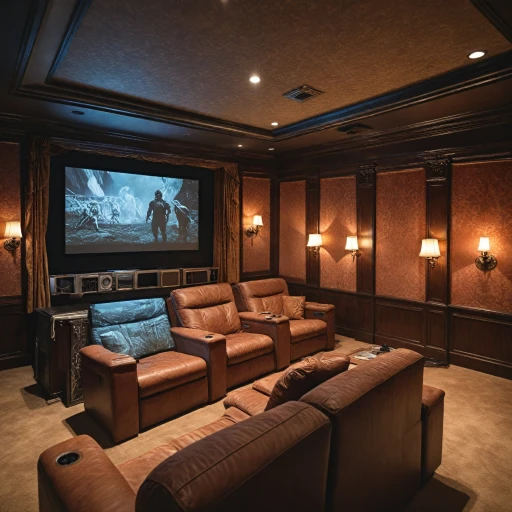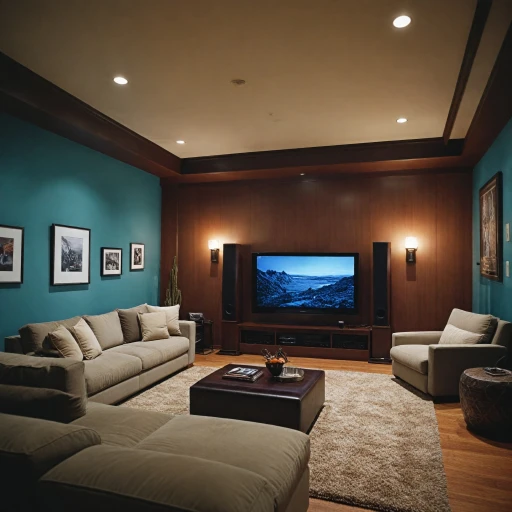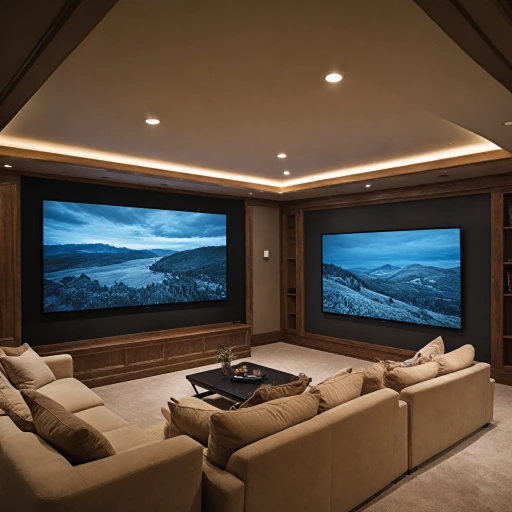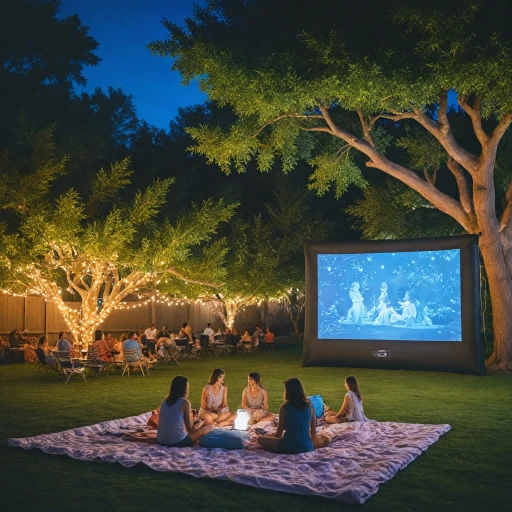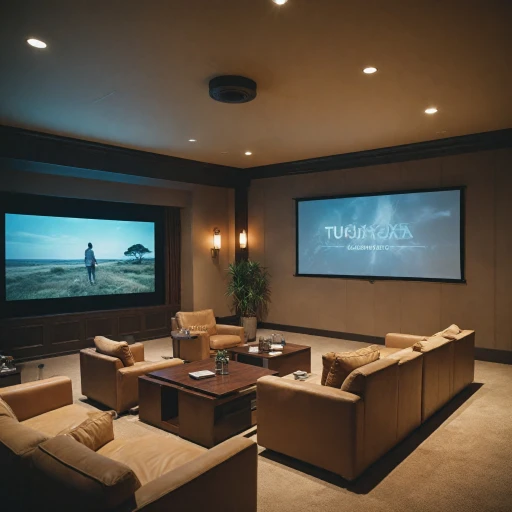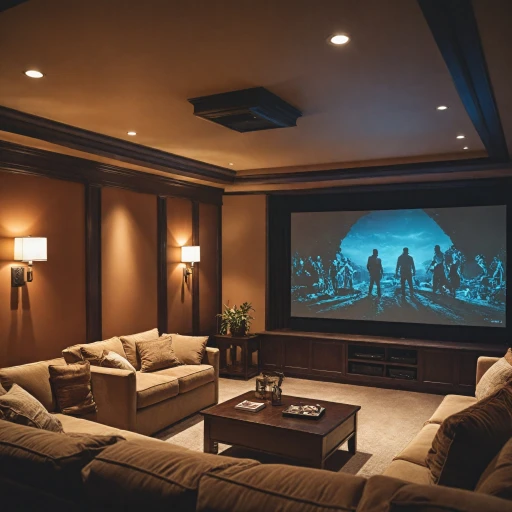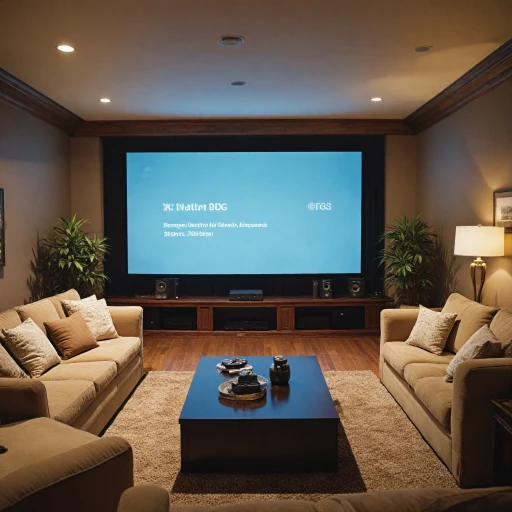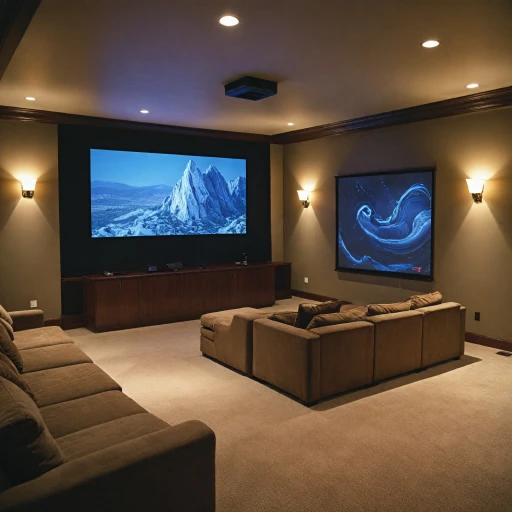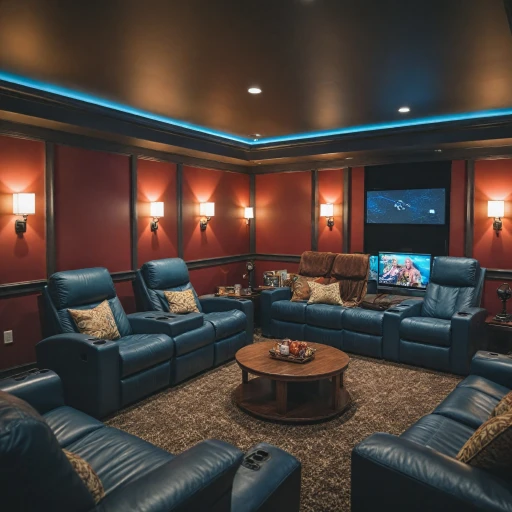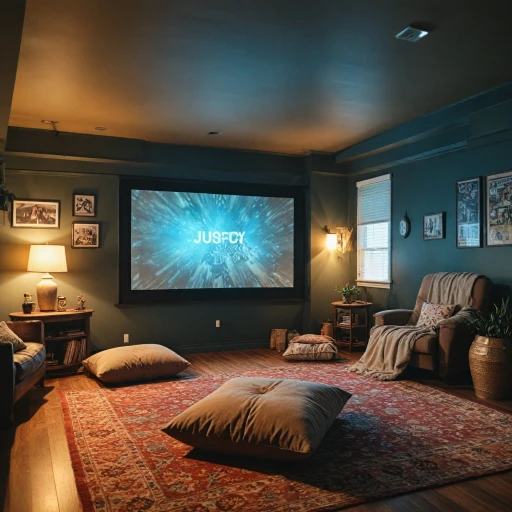
Understanding Wall-Mounted Projector Screens
Exploring the Basics of Wall-Mounted Projector Screens
When it comes to creating a captivating home theater experience, the choice of a wall-mounted projector screen plays a crucial role. These screens are designed to provide a stable and high-quality surface for your projector, ensuring that your movies, shows, and games are displayed with clarity and vibrancy. Unlike portable projector screens, wall-mounted options offer a more permanent and aesthetically pleasing solution for your home theater setup.
Wall-mounted projector screens come in various styles, including fixed frame, motorized, and manual pull-down screens. Fixed frame screens are known for their sleek design and are often chosen for their ability to maintain a perfectly tensioned surface, which is essential for high-quality projection. Motorized screens, on the other hand, offer the convenience of retracting into the ceiling or wall when not in use, making them an excellent choice for those who value both functionality and aesthetics.
Choosing the right screen material is another important consideration. Matte white screens are popular due to their ability to reflect light evenly, providing a bright and clear image. However, there are other materials available, such as gray screens, which can enhance contrast in rooms with some ambient light. For those interested in a more advanced setup, tab tensioned screens ensure a flat surface, reducing the risk of wrinkles and waves that can distort the image.
For more insights on enhancing your home theater experience with an automatic movie screen, you can explore this resource.
Benefits of Wall-Mounted Projector Screens
Transforming Your Home Viewing Setup
Wall-mounted projector screens offer a host of benefits that can significantly elevate your home viewing experience. By exploring the largest projector screens available on the market, you can make an informed choice that best suits your needs.
Immersive Home Theater Experience
At the core of any exceptional home theater system is the ability to immerse yourself completely into the viewing experience. A wall-mounted projector screen can transform even a modest space into a cinematic oasis. Whether you choose a fixed frame, a motorized variant, or a manual series, these projection screens provide a permanent viewing surface that maximizes your projector’s capabilities.
Space Efficiency
Unlike bulky TVs or portable projector screens that require setup time, these screens seamlessly integrate into your home decor. Mounting options such as ceiling recessed or wall ceiling setups contribute to a clutter-free environment, enabling you to enjoy your favorite series or movie without distractions.
Enhanced Picture Quality
The use of high-quality screen materials, like matte white or tab tensioned surfaces, ensures optimal picture quality. These specialized materials enhance the contrast and clarity of projected images, providing a superior viewing experience compared to traditional surfaces. Elite screens, for instance, emphasize the importance of the right screen material in augmenting picture acumen.
Satisfaction Across Price Ranges
Projector screens cater to various budgets, with options ranging from affordable manual pull-down screens to sophisticated motorized projector setups. A wealth of brands, including Draper and Elite, offer diverse series that meet different price and quality expectations, ensuring every home theater can find an ideal match.
Versatility and Compatibility
Given the diverse types of projectors, from ultra short throw to standard ceiling-mounted projectors, a range of projection screens ensures compatibility. Fixed frame and tab tensioned screens, for instance, accommodate multiple configurations and tend to excel in rooms with specific spatial constraints.
Whether you are new to the realm of home theaters or seeking to enhance your current setup, understanding the advantages of a wall-mounted projector screen is key. This foundational element not only optimizes your viewing experience but also maximizes the potential of your projection system.
Choosing the Right Screen Material
Picking the Best Screen Surface for Optimal Projection
Choosing the right screen material for your home theater projector is an essential factor in enhancing your viewing experience. From fixed frames to motorized setups, the material of the projection screen significantly impacts the overall image quality. Material Options When it comes to surface types, there are several options available that cater to different projector and screen setups:- Matte White: A popular choice for its versatility and affordability, matte white surfaces offer a balanced color rendition and adequate contrast.
- Acumen Series: These surfaces are designed for ultra-short throw projectors and boast superior brightness and clarity.
- Tab Tensioned: For those opting for a motorized projector screen, tab tensioned surfaces provide a smoother, ripple-free image due to their tight stretch.
- Elite Screens: Known for their quality, these screens come in several materials catering to diverse setups including portable and fixed frame options.
Installation Tips for Wall-Mounted Screens
Installation Guidance for Your Wall-Mounted Projector Screen
To fully appreciate the benefits of wall-mounted projector screens, proper installation is paramount. Not only does it ensure optimal performance, it significantly enhances your viewing experience, whether you use a fixed frame, motorized projector, or portable projector setup. Here's how to get it right from the start.- Select the Perfect Location: Choose a flat wall surface, ensuring it's large enough to accommodate the screen size. Consider the projector's placement as well, with short throw or ultra short throw projectors allowing more flexibility in smaller spaces.
- Height and Distance: Mount the screen at eye level and ensure it's the right distance from the seating area, factoring in the projector's lens ratio for ideal projection. This variability will often depend on if you're using ceiling recessed, wall ceiling, or tab tensioned options from reputable series like Acumen or Elite Screens.
- Frame Alignment: Especially with fixed frame screens, level alignment is crucial for a uniform display. Utilize a spirit level for accuracy. Motorized and manual series projector screens require careful alignment of their brackets to avoid uneven rolling.
- Secure Mounting: Always use appropriate wall fixings such as drywall anchors. Screens that are heavier, like those from Draper or the Acumen series, may need additional support.
- Electrical Considerations: If you're opting for a motorized projector screen, ensure there's access to a power outlet, or consider the convenience of a motorized tab tensioned system.
- Test and Adjust: Once mounted, test your projection setup. Adjust the screen's tension and alignment as needed to ensure that the matte white surface is taut and dissension-free.
Maintenance and Care for Your Screen
Keeping Your Projector Screen in Top Condition
Maintaining your wall-mounted projector screen is essential to ensure a long-lasting and optimal viewing experience. Whether you have a fixed frame, motorized, or manual series screen, regular care can prevent common issues and extend the life of your investment.
Regular Cleaning Practices
Dust and dirt can accumulate on the surface of your projection screen, affecting image quality. Use a soft, lint-free cloth to gently wipe the screen. For more stubborn spots, a mild soap solution can be used, but ensure the screen is completely dry before use. Avoid harsh chemicals that might damage the screen material, especially if you have a matte white or tab tensioned screen.
Inspecting the Screen Mechanism
If you own a motorized projector screen or a pull screen, regularly check the mechanism for smooth operation. Listen for unusual noises that might indicate a problem. For ceiling recessed or wall ceiling installations, ensure the screen retracts fully without obstruction. This is particularly important for screens like the Elite Screens series, which rely on precise mechanisms.
Environmental Considerations
Projector screens are sensitive to environmental factors. Keep your screen away from direct sunlight, as UV rays can degrade the screen material over time. If your screen is in a high-humidity area, consider using a dehumidifier to prevent mold or mildew, which can affect both fixed and portable projector screens.
Addressing Wear and Tear
Over time, you might notice some wear on your screen, especially if it's a frequently used portable projector or part of a high-traffic home theater setup. For minor tears or wrinkles, consult the manufacturer's guidelines or consider professional repair services. Brands like Draper and Elite offer support for their products, ensuring your screen remains in peak condition.
By following these maintenance tips, you can enjoy a crisp and clear projection for years to come, enhancing your home theater experience without frequent replacements or repairs.
Common Challenges and Solutions
Troubleshooting Common Issues and Providing Solutions
When it comes to wall-mounted projector screens, users can often encounter a range of challenges. Addressing these proactively can ensure a smooth projection experience and prolong the life of your investment.- Wrinkling or Uneven Surface
- Over time, projector screens may develop wrinkles, especially if not installed properly or tensioned correctly. Opting for a tab tensioned projector screen can minimize this risk, ensuring a flat projection surface. If wrinkling occurs in a manual series or any fixed frame setup, adjusting the frame tension can help smooth the surface.
- Motorized Screen Malfunctions
- For motorized projector screens, issues with the motor or controls can disrupt operation. Regularly check the power supply and remote functionality. If a problem persists, consult the specific manual or consider contacting a specialist familiar with brands like Elite Screens or Draper for repairing the projector acumen.
- Projection Misalignment
- Misalignment is a typical issue when setting up projection in home theater setups. Ensure your projector and screen alignment match the throw distance specifications for your short throw or ultra-short throw projectors. Proper alignment guarantees a clear and focused image.
- Image Quality Deterioration
- If you experience a decrease in image quality, it may be due to dust accumulation or damage to the matte white projection surface. Regular maintenance, including gentle cleaning and appropriate care for the projector's lens, can help maintain optimal visuals.
- Fixed vs. Portable Screens Debate
- Fixed screens often provide better stability and performance in dedicated theater rooms, while portable screens offer flexibility for varied environments. Evaluate your specific needs and choose a setup where the benefits of each type align with your viewing habits.
- Price vs. Quality Balance
- The acumen in selecting the right screen often involves balancing price and quality. Fixed frame screens might have a higher upfront price, but their durability often justifies the cost, especially for avid home theater enthusiasts.

